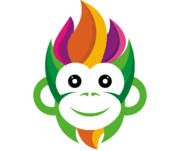Discovering the Rich Heritage of Gwangjang Market: A Must-Visit Destination for Foodies and Culture Enthusiasts
Gwangjang Market is a historic market in Seoul, South Korea, and one of the largest traditional markets in the country. Established in 1905, the market has been a hub of trade, culture, and culinary arts for over a century. From silk fabrics to Korean street food, Gwangjang Market is a one-stop-shop for all things local and authentic. In this article, we will explore the rich heritage of Gwangjang Market and the unique experiences it has to offer.
The History and Evolution of Gwangjang Market
Gwangjang Market has a fascinating history that spans over a century. The market was established in 1905 during the Japanese occupation of Korea and was initially known as Dongseong Market. It was renamed Gwangjang Market in 1960 after the Korean War. The market was rebuilt in 1964 and has undergone several renovations since then. Today, the market is a popular tourist attraction that attracts visitors from all over the world.
Exploring the Market: Must-Visit Shops and Stalls
Gwangjang Market is a bustling labyrinth of alleys and streets, each offering something unique and exciting. Here are some must-visit shops and stalls in the market:
Silk Fabric Shops
Gwangjang Market is famous for its silk fabrics, which are sold in a wide variety of colors and patterns. Visitors can watch skilled weavers at work and even buy a custom-made hanbok, a traditional Korean dress.
Street Food Stalls
Gwangjang Market is a paradise for foodies, with an extensive range of Korean street food. Visitors can try the famous bindaetteok, a mung bean pancake, or tteokbokki, a spicy rice cake dish. Other popular dishes include bibimbap, gimbap, and kimchi.
Vintage Clothing Stores
Gwangjang Market is a treasure trove for vintage clothing lovers. Visitors can find unique pieces of clothing from different eras, including traditional Korean clothing, military uniforms, and retro fashion.
Korean Traditional Medicine Stores
Gwangjang Market is also home to traditional Korean medicine stores that offer a range of remedies and treatments. Visitors can try acupuncture or cupping therapy, or buy medicinal herbs and supplements.
The Culture and Traditions of Gwangjang Market
Gwangjang Market is not just a place to shop and eat but also a hub of Korean culture and traditions. Here are some unique experiences that visitors can have at the market:
Watching the Weavers
Visitors can watch skilled weavers at work in the silk fabric shops, creating beautiful fabrics with intricate designs. It’s a fascinating process that has been passed down for generations.
Traditional Korean Music Performances
Visitors can enjoy traditional Korean music performances at the market, with musicians playing instruments like the gayageum, a traditional Korean zither.
Learning About Korean History and Culture
Gwangjang Market is a great place to learn about Korean history and culture. Visitors can take a guided tour of the market, visit the Korean Food Culture Hall, or attend a cooking class and learn how to make Korean dishes.
Tips for Visiting Gwangjang Market
Here are some tips for visitors who want to make the most of their trip to Gwangjang Market:
Wear Comfortable Shoes
Gwangjang Market is a large and bustling place, so wear comfortable shoes to explore the market without getting tired easily.
Bring Cash
Many shops and stalls in the market only accept cash, so it’s a good idea to bring enough Korean won with you.

Try the Street Food
Gwangjang Market is famous for its street food, so be sure to try some of the local specialties like bindaetteok and tteokbokki.
Negotiate Prices
It’s common to negotiate prices in the market, so don’t be afraid to haggle with vendors to get a good deal.
Gwangjang Market is a cultural and culinary gem in Seoul, offering visitors a unique experience of Korean traditions and flavors. From silk fabrics to street food, vintage clothing to traditional medicine, the market has something for everyone. A visit to Gwangjang Market is a must-do for anyone looking to immerse themselves in the rich heritage of Korea.
FAQs
What is the best time to visit Gwangjang Market?
Gwangjang Market is open from early morning until late at night, so there is no specific best time to visit. However, it’s best to avoid peak hours like lunchtime and dinnertime to avoid crowds.
Is Gwangjang Market expensive?
Gwangjang Market offers a range of prices, from affordable street food to high-end silk fabrics. Visitors can find something to fit their budget.
How do I get to Gwangjang Market?
Gwangjang Market is located in Jongno-gu, Seoul, and is easily accessible by subway. Take Line 1 or Line 2 to Jongno 5-ga Station and exit at Gate 7.
Can I bargain with vendors in Gwangjang Market?
Yes, it’s common to bargain with vendors in the market to get a better price.
What are the must-try dishes in Gwangjang Market?
Some of the must-try dishes in Gwangjang Market include bindaetteok, tteokbokki, bibimbap, gimbap, and kimchi. Visitors can also try other Korean street food and snacks.
